Nature never ceases to amaze, but some animals seem to break all the rules. From creatures that survive without oxygen to those that regenerate lost limbs, these adaptations challenge everything we thought we knew about life. Are these animals anomalies, miracles, or proof that evolution has no limits? Let’s dive into the wildest, most unbelievable adaptations in the animal kingdom.
1. The Immortal Jellyfish: Life Without End

Shutterstock
The immortal jellyfish (Turritopsis dohrnii) doesn’t just defy death—it cheats it completely. When stressed, injured, or nearing the end of its lifecycle, it reverts to its polyp stage, essentially starting its life over. Found in oceans worldwide, this tiny creature, no bigger than a pinky nail, has the potential to live forever. While predators and disease can still claim its life, this biological reset makes it one of nature’s most intriguing mysteries. Scientists are studying its unique lifecycle, hoping to unlock secrets about aging and immortality.
2. The Axolotl: The Eternal Baby

iStock
This smiling amphibian refuses to grow up—literally. Unlike other amphibians, the axolotl retains its juvenile traits, such as external gills, for its entire life. Found only in Mexico’s lake systems, it’s famous for its ability to regenerate almost any part of its body, from limbs to its spinal cord and even parts of its heart and brain. Despite its superpower, the axolotl is critically endangered due to habitat loss. As researchers study its regeneration abilities, they hope it might one day help humans heal as efficiently as this aquatic wonder.
3. The Oarfish: The Sea’s Super-Sized Ribbon
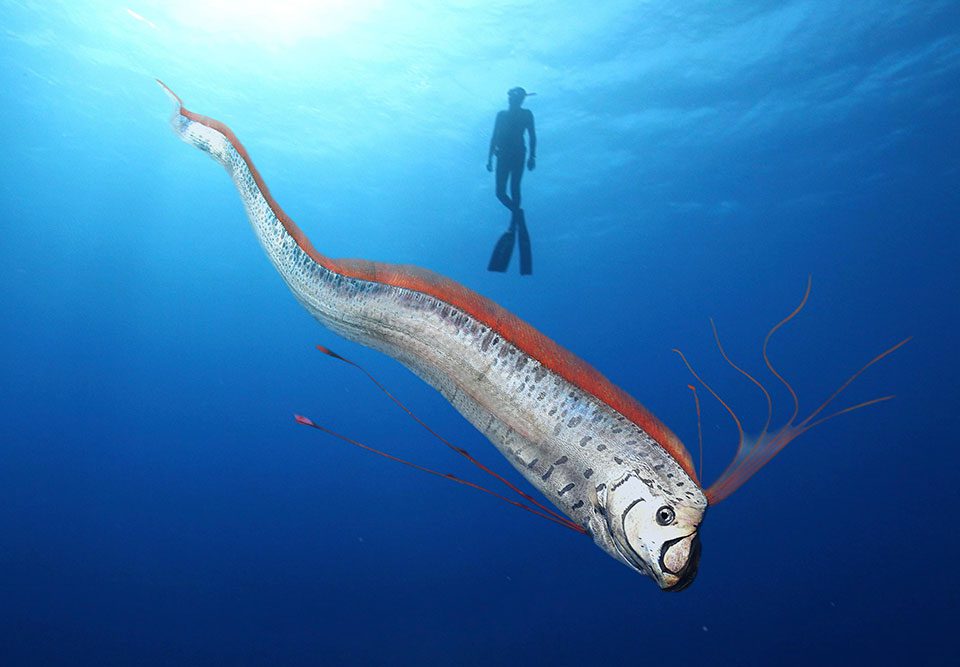
YouTube
At up to 36 feet long, the oarfish is the longest bony fish in the world, yet its thin, ribbon-like body makes it almost ghostly in appearance. Living deep in the ocean, it rarely surfaces, leading to speculation that it inspired ancient sea serpent myths. Even more fascinating, oarfish have been known to appear near the surface before earthquakes, leading some to call them nature’s seismic sensors. With its shimmering silver body and undulating movements, it’s a real-life sea legend that continues to mystify researchers and sailors alike.
4. The Hairy Frog: A Self-Mutilating Warrior
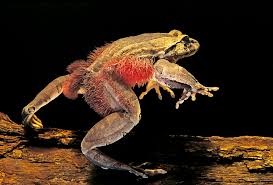
YouTube
Known as the “Wolverine frog,” this Central African amphibian uses a gruesome defense mechanism: it breaks its own bones and pushes them through its skin to create sharp claws. These bone claws are used to slash predators, giving the frog a brutal yet effective weapon. While its hairy appearance during mating season helps it breathe through its skin, it’s the bone claws that steal the spotlight. This self-mutilation is both fascinating and horrifying, showcasing the extremes nature will go to for survival.
5. The Mantis Shrimp: The Underwater Boxer
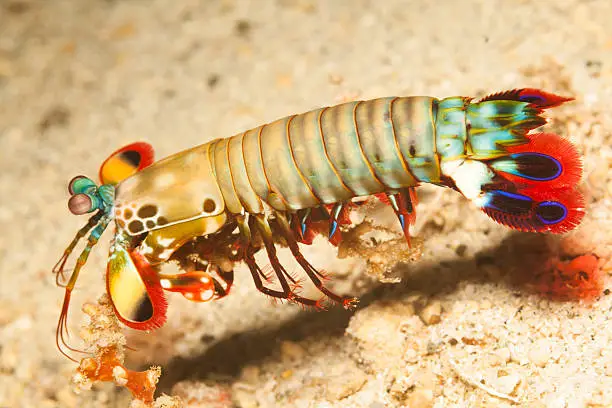
iStock
The mantis shrimp packs a punch so powerful it can break glass. Using spring-loaded clubs, it strikes prey with the force of a bullet, reaching speeds of 50 mph. Its strike is so fast it creates cavitation bubbles that produce heat and light, essentially delivering a double punch. Equally impressive are its eyes, which can see polarized light and ultraviolet wavelengths, making it one of the most advanced visual systems in the animal kingdom. It’s evolution’s ultimate overachiever, combining power and precision in one tiny, colorful package.
6. The Tardigrade: The Ultimate Survivor

iStock
Microscopic yet nearly indestructible, tardigrades—nicknamed “water bears”—can survive conditions no other life form can endure. They’ve been exposed to the vacuum of space, extreme radiation, and temperatures from -458°F to 300°F, and they still live to tell the tale. When water is scarce, they enter a state of cryptobiosis, essentially shutting down their metabolism until conditions improve. Scientists are fascinated by their resilience, believing tardigrades may hold the key to understanding how life can endure the harshest environments—even on other planets.
7. The Wood Frog: The Frozen Frog That Lives

YouTube
In the icy forests of North America, the wood frog performs an incredible feat: it freezes solid during winter, its heart, stopping entirely. Using glucose as a natural antifreeze, its cells remain intact despite the freezing temperatures. When spring arrives, the frog thaws and hops away as if nothing happened. This process isn’t just hibernation; it’s biological suspension. Researchers are studying the wood frog’s survival mechanisms, hoping to apply its antifreeze-like properties to medical advancements, such as organ preservation.
8. The Bombardier Beetle: Nature’s Flamethrower
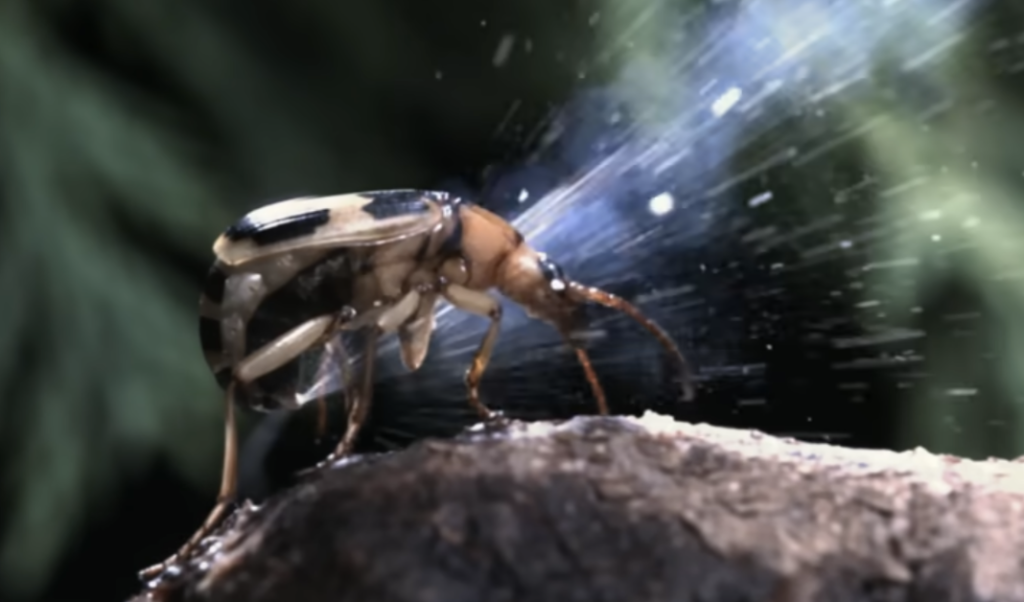
YouTube
When attacked, the Bombardier beetle releases a boiling, noxious spray from its abdomen, creating a tiny chemical explosion. The spray reaches temperatures of up to 212°F, scalding its predators and allowing the beetle to escape unharmed. Found on nearly every continent, it’s one of nature’s most ingenious defense mechanisms. Scientists are studying how the beetle mixes its chemicals without harming itself, with hopes of applying this controlled reaction to industrial and medical fields. It’s both a walking chemistry lab and a tiny flamethrower.
9. The Leaf-Tailed Gecko: The Master of Disguise
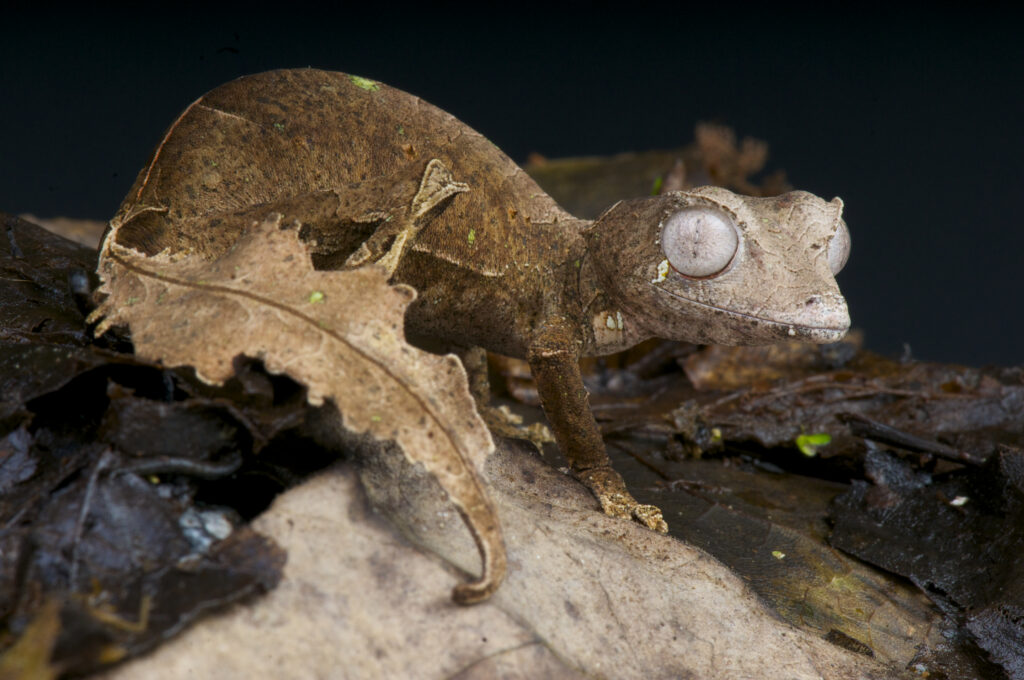
Shutterstock
The leaf-tailed gecko is a camouflage expert, blending seamlessly into tree bark with its leaf-shaped tail and textured skin. Found in Madagascar, these nocturnal reptiles evade predators by becoming nearly invisible. Even when spotted, they use a defense mechanism called “tail autotomy,” where they detach their tails to distract attackers while making a quick escape. This ability to vanish in plain sight is a testament to the gecko’s evolutionary ingenuity, proving that sometimes the best defense is simply not being seen.
10. The Flying Snake: Airborne Acrobat
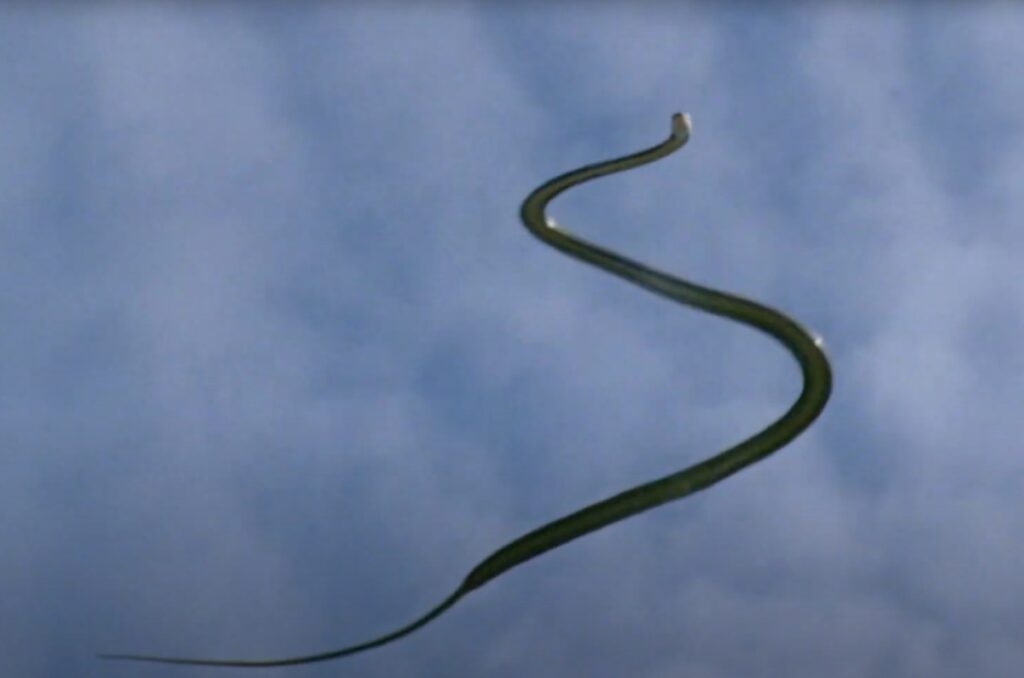
YouTube
Snakes aren’t typically associated with flight, but the flying snake defies gravity with its remarkable gliding ability. Found in Southeast Asia, this serpent flattens its body and launches itself from trees, using its movements to glide up to 100 feet through the air. Scientists believe this ability evolved to help the snake escape predators and reach food sources in dense forests. Watching one in action feels almost surreal—proof that nature isn’t afraid to rewrite its own rules. With its airborne acrobatics, the flying snake blurs the line between fact and fantasy.
11. The Velvet Worm: Sticky Predation Master
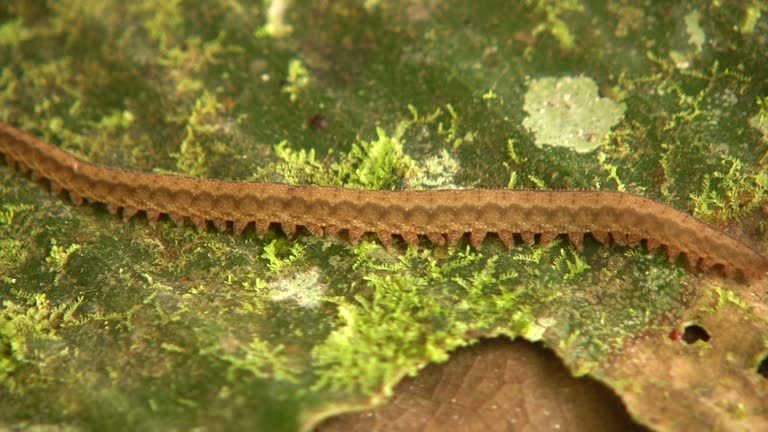
iStock
The velvet worm may look harmless, but its hunting method is downright ingenious. This soft-bodied invertebrate shoots sticky slime from specialized glands to trap its prey, immobilizing insects in an instant. Found in tropical regions, velvet worms use their antennae to locate prey in the dark, striking with incredible precision. Once the prey is subdued, the worm secretes digestive enzymes to break it down for consumption. Its combination of stealth, accuracy, and biochemical weaponry makes it a marvel of evolution—and a nightmare for unsuspecting bugs.
12. The Saharan Silver Ant: Speed Demon of the Desert
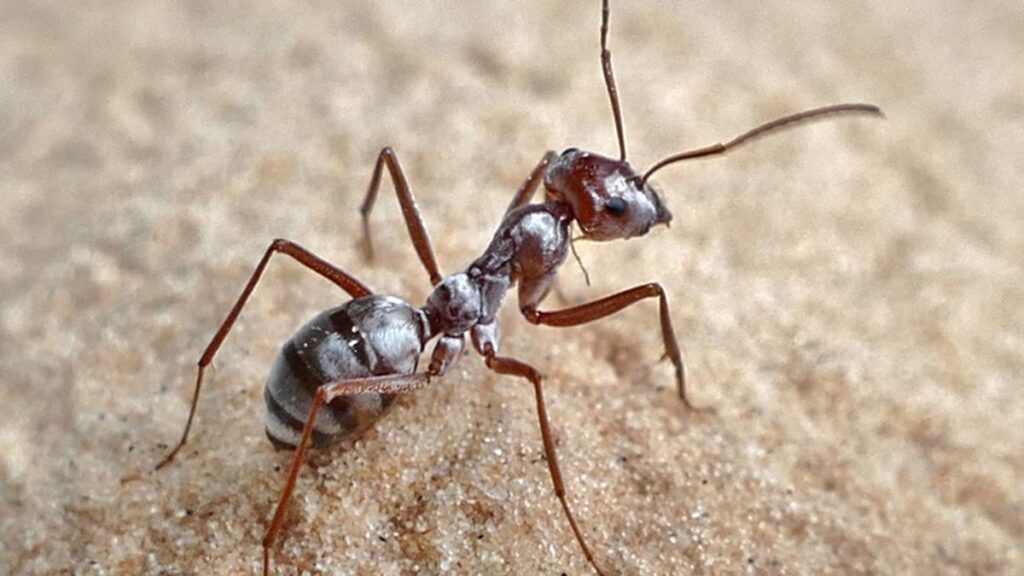
Newser
In the blistering heat of the Sahara Desert, the Saharan silver ant has evolved to thrive where few creatures dare tread. With its metallic exoskeleton reflecting sunlight and keeping it cool, this ant races across the sand at speeds of up to 85 body lengths per second—the fastest relative speed of any land animal. Its short, frenetic journeys help it avoid the heat and predators like lizards. By adapting to one of the planet’s harshest environments, the Saharan silver ant exemplifies resilience and speed in the face of adversity.
13. The Planarian Worm: The Regeneration Genius
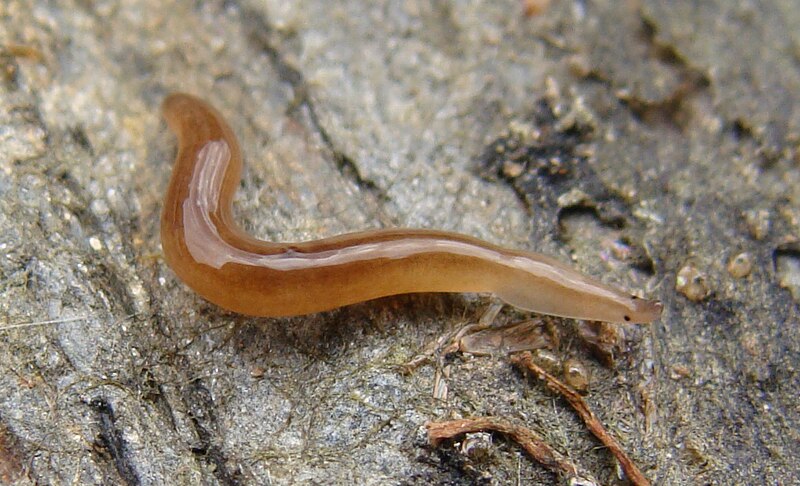
Wikipedia
If immortality had a mascot, it might be the planarian worm. This tiny flatworm can regenerate its entire body from just a fragment. Cut it into pieces, and each piece will grow into a new worm, complete with a functioning brain and internal organs. Scientists are studying this remarkable ability, hoping to unlock the secrets of regeneration and aging. Found in freshwater environments worldwide, planarian worms are tiny but mighty proof of nature’s limitless potential for renewal and adaptation.
14. The Immortal Hydra: The Fountain of Youth
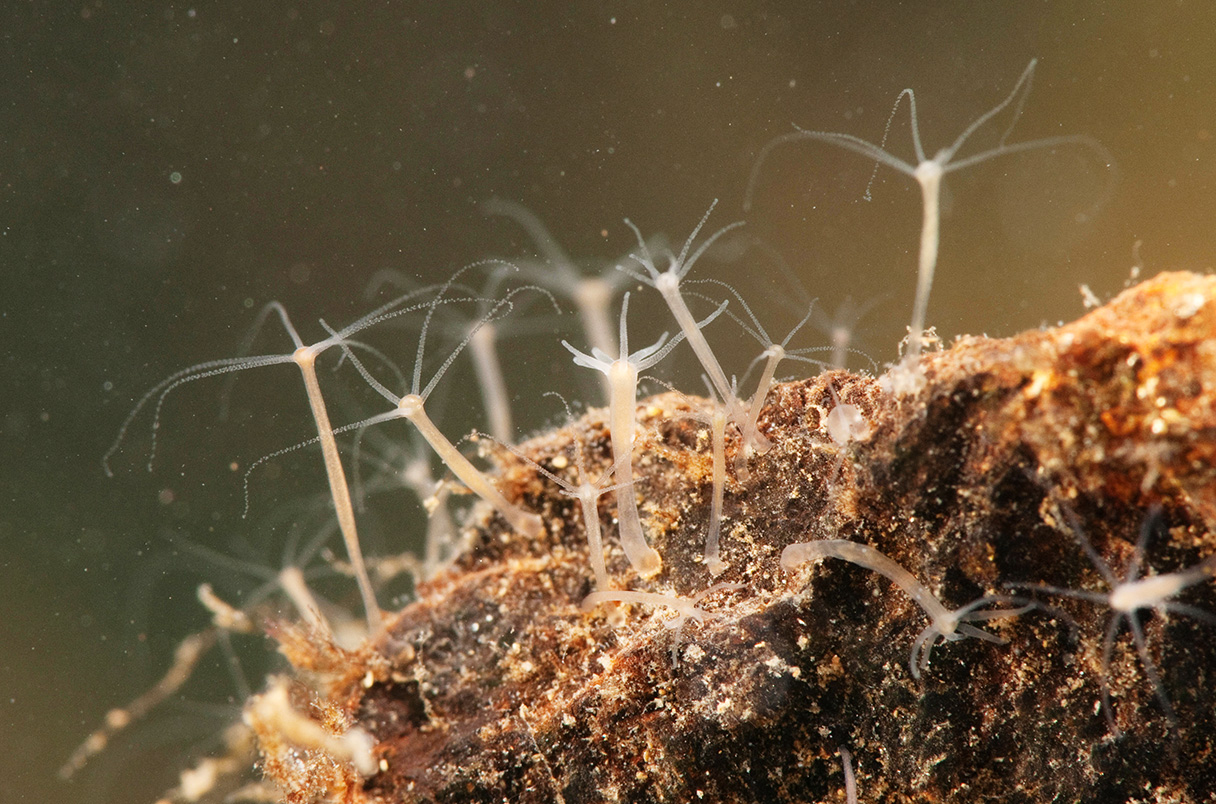
Flickr
The hydra, a tiny freshwater organism, seems to possess the secret to eternal youth. Unlike most animals, it doesn’t age or deteriorate over time. Thanks to its unique regenerative abilities, the hydra continually replaces its cells, effectively avoiding the aging process. Scientists are fascinated by this biological anomaly, studying the hydra to understand how its cellular renewal might hold clues for human longevity. Its small size and unassuming appearance mask one of nature’s most extraordinary feats—cheating time itself.
15. The Electric Eel: Nature’s Living Battery
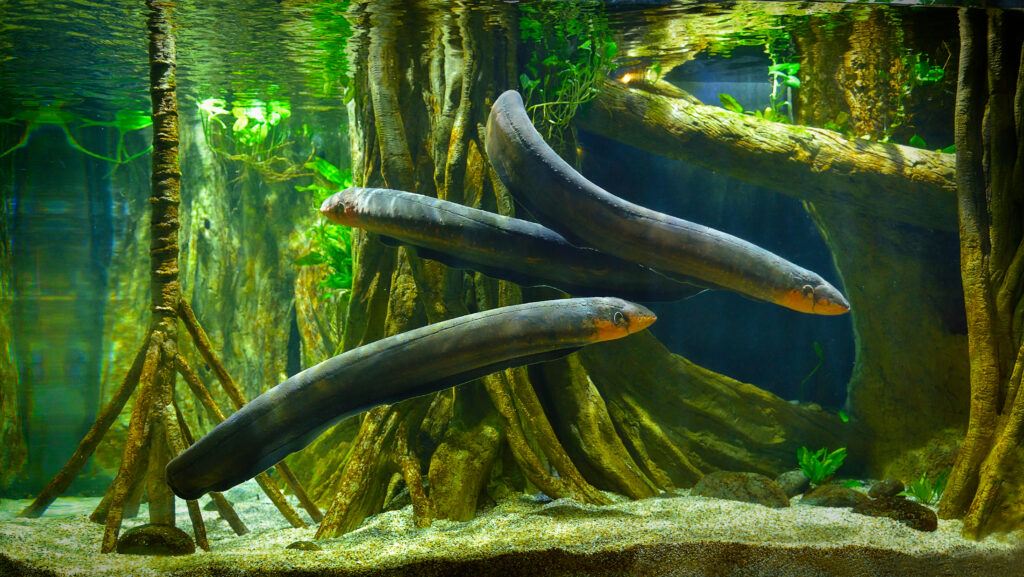
Shutterstock
The electric eel generates shocks of up to 860 volts, using specialized cells called electrolytes to stun prey and deter predators. Found in South America’s rivers, it’s more closely related to catfish than true eels. The electric eel’s ability to produce such a powerful current has inspired scientists to explore its unique anatomy for applications in renewable energy. Its bioelectricity is both a weapon and a tool, highlighting how evolution can create power in unexpected ways. It’s a living battery that lights up the world—literally.
16. The Antarctic Icefish: Bloodless Survivor

Flickr
Living in the icy waters of Antarctica, the Antarctic icefish has no red blood cells or hemoglobin, making its blood appear clear. This adaptation reduces the thickness of its blood, allowing it to survive in freezing temperatures. Instead, it relies on large volumes of blood and antifreeze proteins to transport oxygen and keep its body functioning. Scientists are intrigued by its unique physiology, studying how it thrives in conditions that would kill most animals. The Antarctic icefish is a testament to life’s ability to adapt to extremes.
17. The Mimic Octopus: Master of Disguise
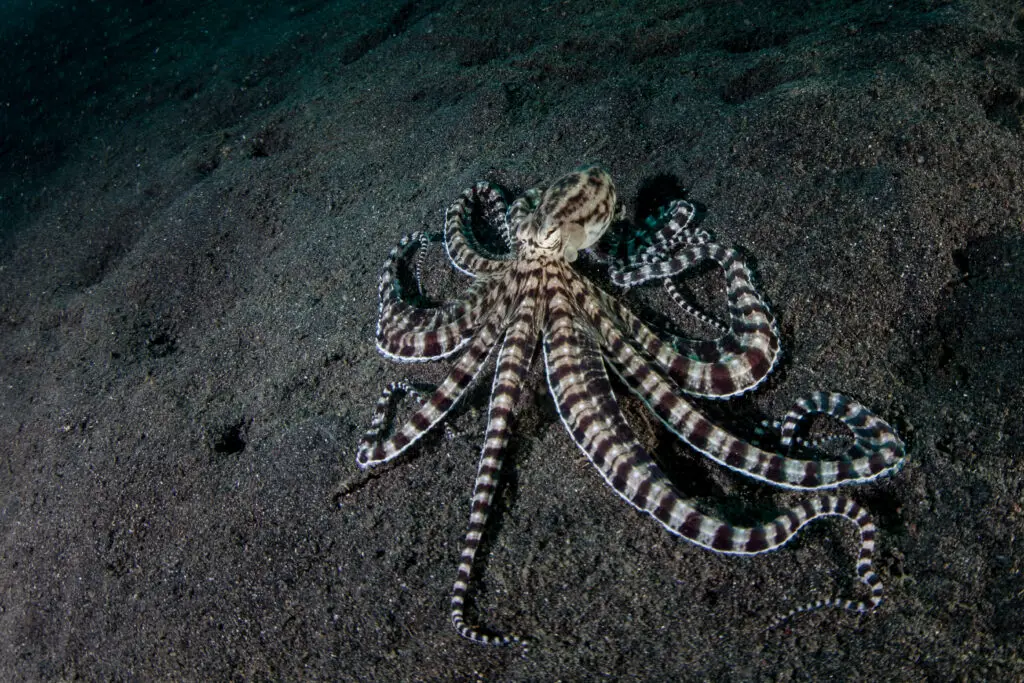
Shutterstock
The mimic octopus takes camouflage to an entirely new level. Found in Indonesia, it not only blends into its surroundings but can impersonate other sea creatures, such as lionfish, sea snakes, and jellyfish, to avoid predators. By altering its color, texture, and movements, the mimic octopus becomes a shapeshifting marvel of the underwater world. Its intelligence and creativity make it a favorite among marine biologists and divers alike. Watching it in action feels like witnessing nature’s version of performance art.
18. The Flying Fish: Sea Skimmers

Flickr
Flying fish don’t truly fly, but they come impressively close. Found in tropical oceans, they use their powerful tails to launch themselves out of the water, gliding for up to 650 feet. Their long, wing-like fins help them soar above the waves, escaping predators like tuna and marlins. This unique ability isn’t just for show—it’s a life-saving adaptation that combines speed, precision, and acrobatics. The flying fish blurs the line between air and water, proving that nature’s ingenuity knows no bounds.
19. The Peacock Spider: Nature’s Tiny Dancer
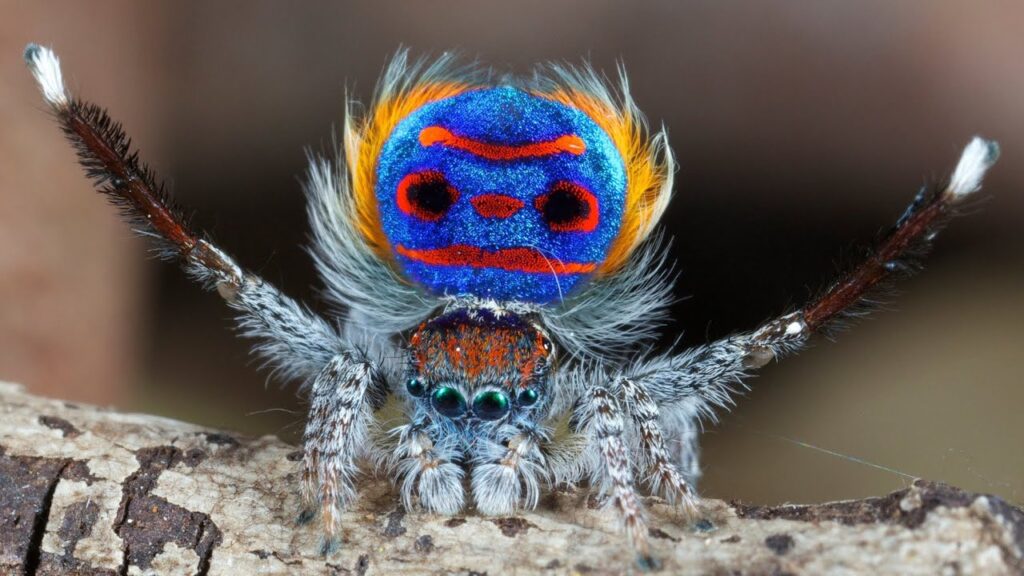
YouTube
This colorful arachnid puts on a dazzling show during courtship, performing intricate dances while displaying vibrant patterns on its abdomen. Found in Australia, the male peacock spider uses its dance to attract a mate, raising its legs and vibrating its body in a mesmerizing routine. Despite its tiny size—barely the length of a grain of rice—it has captured the fascination of scientists and nature enthusiasts worldwide. The peacock spider reminds us that even the smallest creatures can make the biggest impression.
These animals prove that evolution is more creative, bizarre, and ingenious than we could ever imagine. From regenerating flatworms to electrifying eels, their adaptations challenge the boundaries of what’s possible in the natural world. Each of these creatures tells a story of survival, innovation, and wonder, reminding us of nature’s infinite capacity for ingenuity. As science continues to explore these incredible phenomena, one thing is clear: life on Earth is far stranger—and more extraordinary—than fiction.


